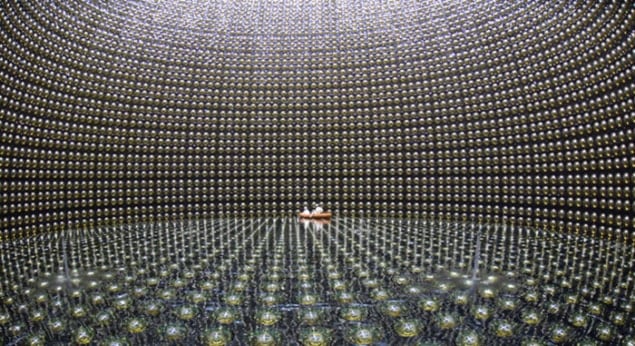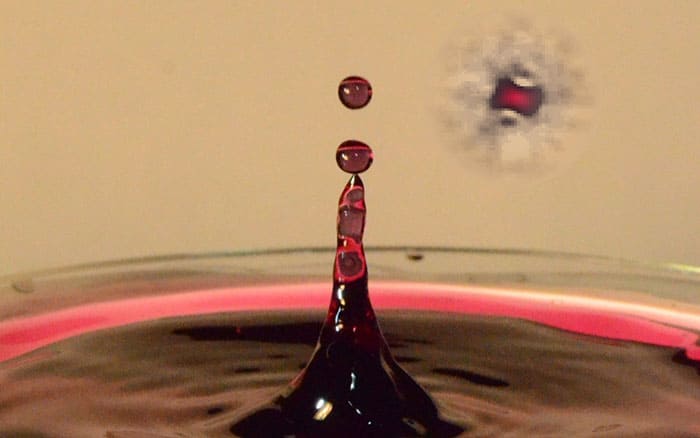Flash Physics is our daily pick of the latest need-to-know developments from the global physics community selected by Physics World‘s team of editors and reporters

Supernova monitor for Super-Kamiokande observatory
Supernovae are not a common occurrence in our galaxy. While this is most likely a good thing for our continued survival, the Super-Kamiokande neutrino detector in Japan aims at detecting neutrinos that are produced during these super-energetic celestial explosions. Only three or four supernovae happen in our galaxy every century, meaning that researchers want to be prepared for when one of these takes place. Now, a new computer system has been installed at the underground Japanese lab that will monitor local supernovae (relatively speaking) in real time and inform the scientific community of the arrival of neutrinos. “It is a computer system that analyses the events recorded in the depths of the observatory in real time and, if it detects abnormally large flows of neutrinos, it quickly alerts the physicists watching from the control room,” says Luis Labarga Echeverría, a physicist at the Autonomous University of Madrid in Spain and a member of the collaboration. With the new monitoring system, collaboration members will be able to assess the significance of an incoming signal within minutes and see whether it is actually from a supernova within the Milky Way. If it is, they can issue an early warning to all interested research centres around the world, as well as the celestial co-ordinates of the source of the neutrinos. This gives observatories around the globe a chance to point all of their instruments towards the source. Neutrinos are of fundamental interest to physics, while also providing us with invaluable information about the death of stars and the formation of black holes. The research is published in the journal Astroparticle Physics and a preprint is available on arXiv.
Brookhaven technologies bag three 2016 R&D 100 Awards
The US Department of Energy’s (DOE) Brookhaven National Laboratory has bagged three awards at the 2016 R&D 100 Awards, which annually recognize the 100 most innovative technologies and services of the past year. The three award-winning technologies include the hard X-ray scanning microscope with multilayer Laue lens nanofocusing optics (a joint award with DOE’s Argonne National Laboratory), the MoSoy catalyst, and nanostructured anti-reflecting and water-repellent surface coatings. The custom-built X-ray microscope – developed by physicists Evgeny Nazaretski and Yong Chu, and team – has a spatial resolution of better than 15 nm – equivalent to 50,000 times smaller than a grain of sand. The only one of its kind, this microscope is also the recipient of a 2016 Microscopy Today Innovation Award. The MoSoy catalyst is a novel catalyst derived from using olybdenum (Mo) and renewable soybeans (Soy). This catalyst produces hydrogen in an environmentally friendly, cost-effective way, eliminating the need for expensive metal catalysts such as platinum to speed up the rate at which water is split into hydrogen and oxygen. The nanotextured “coatings” or etchings were fabricated at Brookhaven’s Center for Functional Nanomaterials (CFN) – the textured surfaces absorb all wavelengths of light from any angle and also repel water extremely efficiently. “It is an honour for Brookhaven Lab to be recognized as among the institutions where innovative research and development is taking place,” say’s lab-director Doon Gibbs. “Our three winners this year illustrate the wide range of scientific discovery happening at Brookhaven.”
Droplets of quantum liquid spotted in ultracold gas

Droplets of a dilute “liquid” have emerged from a gas of ultracold atoms created by Tilman Pfau and colleagues at the University of Stuttgart in Germany. The team cooled dysprosium atoms to a few billionths of a degree above absolute zero. The atoms were trapped using light and magnetic fields, which were fine-tuned to create a repulsive short-range interaction between the atoms. There is also a long-range attractive magnetic interaction between dysprosium atoms, and together these interactions are similar to the forces between molecules in a conventional liquid. Pfau and colleagues found that tiny droplets condensed out of the gas when it was chilled. The droplets contained a few thousand atoms and the researchers found that a minimum number of atoms is required to stabilize a droplet. Describing its work in Nature, the team was also able to use quantum mechanics to calculate the critical number of atoms required to form a droplet – which was 600–800, depending upon the applied magnetic field. Although the droplets have densities that are 10–8 that of liquid_helium droplets, the team says that its droplets could provide insight into much denser quantum liquids and even atomic nuclei.
- You can find all our daily Flash Physics posts in the website’s news section, as well as on Twitter and Facebook using #FlashPhysics. Tune in to physicsworld.com later today to read today’s extensive news story on the physics of creasing ribbons.



